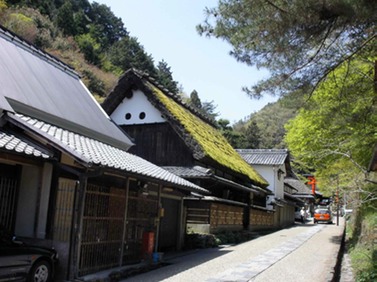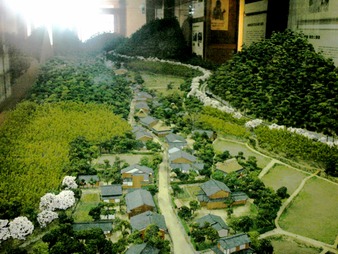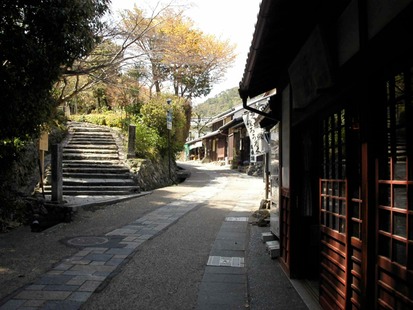Tuesday, 15 April 2008
 Two weeks down, one week (more or less) to go.
Two weeks down, one week (more or less) to go.
We headed downstairs to the Viking breakfast just after eight, bright-eyed, bushy tailed, and in need of substantial nutrition to carry us through a walking-oriented day. And, if the range of goodies on offer didn’t match what we’d encountered at our previous Viking breakfast back at the start of the sojourn, the quality was, we thought, better.
From there it was a matter of a hike to Sannomiya and an hour-long train journey to the outskirts of Kyoto (Hankyu Arashiyama station, to be precise) where we placed the baggage in a convenient coin locker, wandered over the river through the cherry-blossoms and caught a bus up into the hills, with a basic plan of walking back downhill from Toriimoto.
The first part of the walk took us along a traditional Japanese street lined with old houses, before we stopped in at Kyoto Municipal Preservation Museum of Saga Toriimoto's Streets and Structures, an impressive title for an impressive little establishment.

While the museum is set up as a reconstruction of a Meiji-period town house, featuring photographs and a model of the area in the early twentieth century, we got the most benefit out of talking to the attendant, who pointed out a number of tiny details that we wouldn’t otherwise have noticed.

Toriimoto is regarded as particularly spectacular in autumn, and, with the tree-covered hills surrounding the area, it would certainly be a fantastic spectacle, but we were there in spring, and, unless they’d been pointed out to us, would probably have walked straight past the tiny and delicate maple flowers if they had not been brought to our attention.
We eventually found ourselves at Gioji Temple, where we wandered through the garden, marvelling at the translucent beauty of the newly formed leaves as the morning sun filtered through the canopy over our heads, the sort of scene you just don’t experience in areas where all the trees are evergreens. The effect was utterly magical, and, again I was fascinated by the mosses which covered the ground under the trees.
The sight was almost enough to make me want to sell up and relocate to some new location where the temperature and rainfall patterns would encourage the development of moss in the garden
From Gioji we continued onwards to Nisonin Temple, which dates back to the first half of the ninth century though the main hall was reconstructed in 1521 after being destroyed by fire, and from there strolled along the bamboo path.